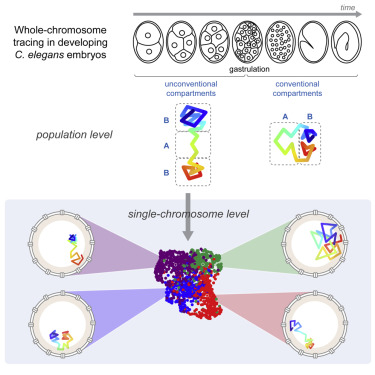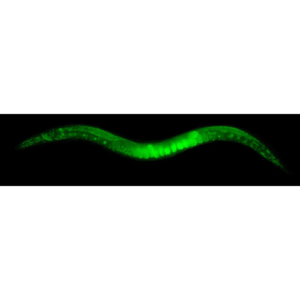Through chromosomes tracking during C. elegans embryo, news findings on their conformation and the function of lamina in chromosomes stretching
To better understand chromosome segregation Ahilya N. Sawh et al. worked on Caenorhabditis elegans embryogenesis and developed a chromosome tracking method. They notice an early barbell-like organization showing that not all epigenetically similar domains were consolidated in space. This organization come from lamina tethering which overrides homotypic B-compartment interactions in early C. elegans embryo. They conclude that tethering to the lamina stretching chromosomes over any genomic distances allowing the barbell organization. These findings highlight a new main role of the lamina and also new conformations during early embryogenesis.

Ultra fast temperature shift device for in vitro experiments under microscopy
Abstract
Current models suggest that chromosome domains segregate into either an active (A) or inactive (B) compartment. B-compartment chromatin is physically separated from the A compartment and compacted by the nuclear lamina. To examine these models in the developmental context of C. elegans embryogenesis, we undertook chromosome tracing to map the trajectories of entire autosomes. Early embryonic chromosomes organized into an unconventional barbell-like configuration, with two densely folded B compartments separated by a central A compartment. Upon gastrulation, this conformation matured into conventional A/B compartments. We used unsupervised clustering to uncover subpopulations with differing folding properties and variable positioning of compartment boundaries. These conformations relied on tethering to the lamina to stretch the chromosome; detachment from the lamina compacted, and allowed intermingling between, A/B compartments. These findings reveal the diverse conformations of early embryonic chromosomes and uncover a previously unappreciated role for the lamina in systemic chromosome stretching.



